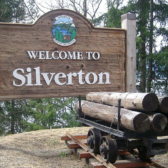Who Owns the Water?
Since 2005, Eileen Delehanty Pearkes has researched and explored the natural and human history of the rivers of the upper Columbia River Basin.
She speaks frequently at conferences and symposia throughout the Basin on the history of the Columbia River Treaty and its effects on Basin residents. She has recently completed a manuscript titled A River Captured – history and hydro-electricity in the upper Columbia Basin.
An American by birth, Pearkes has been a resident of Canada since 1985 and Nelson since 1994. She has written many articles and several books that explore place and its cultural meaning.
The Geography of Memory, a history of the landscape and indigenous people of the upper Columbia watershed published in 2002, remains a Kootenay classic.
Pearkes has agreed to help The Nelson Daily readers understand the importance of the Columbia River Treaty to the region with another edition of River Talk.
Today the river historian writes about the subject of water ownership.
The recent divide that has opened up between the federal and provincial governments regarding the proposed Enbridge pipeline has me pondering a similar division that occurred during the national debate over the Columbia River Treaty — between its signing in 1961 by both countries and its ratification by Canada in 1964.
While the U.S. senate ratified the agreement almost immediately with a vote of 99-1 (Imagine that happening today in Washington D.C.!), in Canada, things were not so simple.
Use of resources is typically a provincial matter. But when commerce crosses boundaries, the federal government steps in.
This is the case with a pipeline through Alberta and B.C., and was also the case with the international Columbia River Treaty. The province of B.C. was under the dynamic and often controversial leadership of W.A.C. Bennett in 1961. He was determined to sell to Americans 30 years’ worth of B.C.’s power benefits that had been authorized by the treaty.
Bennett wanted the money to finance the construction of the Columbia River dams.
Federal government policies in the 1960s discouraged electricity export. The feds were unhappy that B.C. had bargained so boldly with American power producers. Nor did they seem to appreciate the renegade premier’s desire to do exactly what he wanted with the province’s resources.
It’s important to remember that at this point the CRT had been signed. The Americans – urgently in need of reliable power to fuel the economic renewal in the Pacific Northwest – were ready for a ratified treaty so that dams could be constructed.
Meanwhile, the two levels in government were settling in for a fight. And fight they did, over the course of the next two years: about the market value of electricity, about Bennett’s “two-river’s policy,” about who should finance the construction of which dams, about who was in charge of which natural resource.
During that time, the newly-elected democratic President John Kennedy began to loosen federal purse strings to finance some dam construction. Construction began on some new dams in the Northwest.
This meant that the terms the Americans had agreed to were growing quickly out of date and their enthusiasm for the Treaty was waning. The progressive-conservative Canadian prime minister John Diefenbaker lost his majority government in 1962 and the liberal leader Lester Pearson started making statements about the “sad story” of the CRT, measuring it as “bad for Canada.”
Another federal election was called a year later, Dr. Jack Davis, a liberal member for Coast-Capilano wrote articles in which he declared the treaty to be a “sell-out of our resources.” It appeared that the CRT – and the B.C. premier’s policy to develop both the Peace and Columbia Rivers – were both on the rocks.
Things were looking up for the local residents opposed to the CRT. Federal politicians back in Ottawa seemed at last to be addressing the views, hopes and aspirations of the residents in the Arrow Lakes valley — who had for years been arguing that Columbia River valleys should not be flooded to provide for corporate interests outside the region, or for that matter, outside the country.
But hope was not to last.
Lester Pearson’s liberal government was elected to a minority government in April, 1963. Pearson’s opposition to the CRT softened. Soon after his election, he met with President Kennedy. Not long after that, he called provincial officials back to Ottawa, instructing them to come to an agreement immediately with the federal government on the sale of power and the other unresolved matters.
The result pulled the battered CRT pages from the fire. A Canada-B.C. Agreement was signed to resolve federal-provincial differences. The Treaty was assured.
Here we are again, 60 years later, at the start of a federal-provincial dispute about an oil pipeline.
Who owns the oil, the land needed to support the pipeline infrastructure, the ocean harbor where the oil would be shipped out?
Who owns the right to choose how all the resources will be used?
Which level of government speaks for the region where the resources are extracted, processed or transported?
Whose values reign?
History suggests that political structures – provincial, federal and international – can be complicating factors in honest debate over resource management. Meaningful regional expression of values sometimes seems like a pipe dream as long as a pipe line.
CRT lesson: when it comes to political parties and elections, the identity of friends and foes can shift and change direction more quickly than a river.
I’ll be listening with only half an ear to the position of Justin Trudeau on Enbridge . . . and on the proposed changes to the CRT.


























